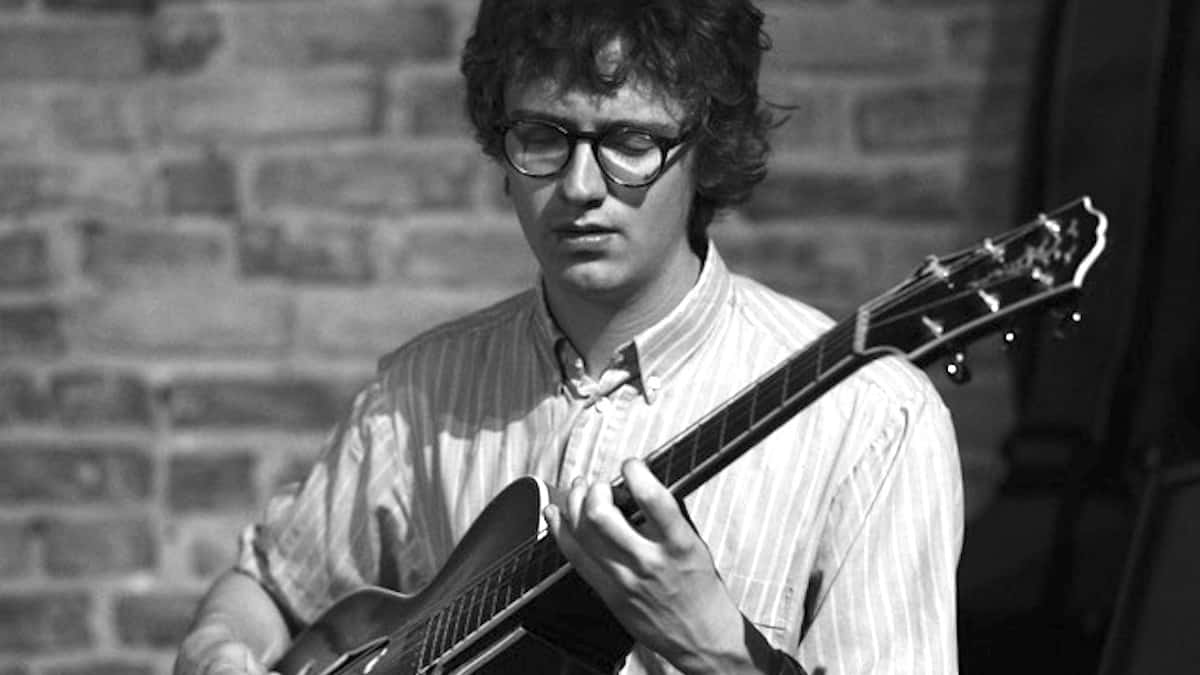Artist Features
Stockholm’s Contemporary Jazz Guitarist, Niklas Fite

Pushing the limits and exploring uncharted territory in jazz music is Stockholm guitarist Niklas Fite.
Son of famed Stockholm jazz guitarist, Andy Fite, Niklas learned jazz guitar from his dad as well as others in Sweden but his heart has been in exploring new sounds in music. I met up with Niklas when I was in Stockholm last summer.
Above photo credit: Cristina Marx
JB: You grew up in a guitar player’s home with your dad, Andy, a celebrated guitarist in Stockholm, what was most helpful for you in your personal development as a guitarist?
NF: I listened to jazz musicians of many instruments from the 1920s to the 1960s, guitar players mainly from the 1930s. From the start, I had the great fortune to play with better musicians than myself, which was crucial.
JB: What are a couple of the most influential jazz guitarists to you and why?
NF: Charlie Christian was as great as you can get. No other jazz guitar has reached what he did, in my opinion. Having said that, I also absolutely love Django Reinhardt, Freddie Green, Dick McDonough, Teddy Bunn, to name a few others.
Derek Bailey’s In Who’s Tradition? (1987). My main field is free improvisation. That record is incredible, he plays with two amps and two volume pedals, in stereo. It’s recorded in a very interesting way, capturing the stereo effects as well as the acoustic details of his guitar. One of my teachers for this type of music was John Russell, who in turn was a student of Derek’s. John was an incredible guitar player, who influenced me just as much as Derek.
Of course, my father, Andy Fite is my most important teacher, who got me hooked on music in general. To me, he is one of the greatest jazz guitarists ever.
JB: What do you find rewarding in your career today as a guitarist in Stockholm?
NF: It’s not an easy task, even in this country that offers state support for culture and music. Many musicians have day jobs, and it’s not always easy to find venues. But we keep it alive somehow. I recently organized four concert nights in Stockholm with a total of sixteen acts. This city has so many great musicians, it’s crazy. So, what’s rewarding is the music itself, and the people we share it with.
JB: Tell us about one of your CD albums.
NF: My CD, Swinging at Topsi’s“- It’s a live recording of me with a bass player and drummer who both live in Berlin. This record shows a wide variety of my skills. The album is basically two sets of freely improvised music plus two Standards. It’s all completely acoustic. The record brings together a lot of impressions. We’re three Swedish musicians of very different generations, Sven Åke Johansson born in 1943, Joel Grip born in 1982 and me born in 1995. We share our musical perspectives and all of the history that brought us here. I feel all of those spirits are present in the music. At the same time, the music is completely in the now, it relies on the now. So this music contains the past, the present, and maybe even the future.
JB: Tell us about the guitar that you use.
NF: I play the guitar my dad had before he got his Epiphone Broadway. Mine is a 1949 Epiphone Deluxe. It has been altered a bit over the years but it is a very deep, loud-sounding Epiphone. My dad got it from his guitar teacher, Joe Negri in Pittsburgh, PA.
I also use large thick unusual picks that I make from acrylic (the same materials that dentures are made from). This large pick gives me a louder, more meatier sound from the guitar. Whenever I can I play acoustic without any amplification. I learned this technique of making picks from John Russell who learned it from Derek Bailey who learned it from percussionist Paul Lytton (who used to be a dentist as well).
JB: So, the gigs that you do here must be at smaller more acoustic venues?
NF: My gigs are mainly freely improvised, like chamber music. I mostly play in smaller venues. That’s what this music is made for, basically. Occasionally I play a traditional jazz gig with my acoustic guitar but that demands co-players with dynamic skills. Luckily, I know a few players who can do that. So I don’t play in bars, or noisy environments like many jazz musicians do. I play in concert settings with an attentive audience or in art galleries, etc.
JB: Are you gainfully employed playing these types of gigs?
NF: I have teaching jobs as well.
JB: What would you say if you could speak to an 18-year-old guitarist who has some facility on the instrument as well as aspirations of a career as a jazz guitarist?
NF: Listen to as many kinds of music as you can. For jazz guitar, the 1930s is the most interesting period. Listen to other traditions: Flamenco, Mauritanian (tidinit), Indian (Veena), Korean (Kayageum), Bulgarian (tamboura), Portuguese (guitarra portuguesa”), etc. Make use of the guitar’s characteristics and abilities. Don’t buy pedals to make it sound like a synth. If you want that sound you might as well play the synth instead. The guitar is a great instrument, make use of that!
Subscribe to Jazz Guitar Today – it’s FREE!
-
Jazz Guitar Lessons2 weeks ago
New JGT Guitar Lesson: Analyzing “Without A Song”
-
Jazz Guitar Lessons4 weeks ago
New JGT Guitar Lesson: Considering “Falling Grace”
-
Artist Features1 week ago
New Kurt Rosenwinkel JGT Video Podcast – July 2024
-
Artist Features2 weeks ago
JGT Talks To Seattle’s Michael Eskenazi




















